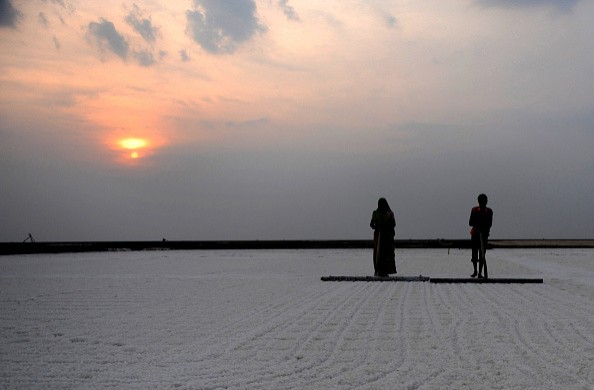India has launched the 'Khavda' energy park, the world's largest renewable energy project in salt deserts, separating India from Pakistan.
The developers of the projects said that the solar and wind energy projects will be so big that they will be visible from space, which will be completed three years from now.
India Launches' Khavda'
'Khavda' was named after the village nearest to the project site. Thousands of laborers install pillars on which solar panels will be mounted at the site that will rise like perfectly aligned concrete cactuses that stretch as far as the eye can see.
The heavy industrial activity will be placed in the middle of the Rann of Kutch in western India's Gujarat state, which makes the project bizarre. Rann is an unforgiving salt desert and marshland at least 70 kilometers (43.5 miles) from the nearest human habitation, a short army truck ride away from one of the world's most tense international borders separating the two South Asian nations.
Other workers were building foundations for enormous wind turbines to be installed, transporting construction materials, building substations, and setting wires for miles.
The project will spread over 726 square kilometers (280 square miles), as large as Singapore. The Indian government said the project will cost at least $2.26 billion.
Some leaders supported the shift to renewable energy, a vital issue at the ongoing COP28 climate summit. The Indian government targets tripling renewable energy worldwide while restraining the use of coal, oil, and natural gas that emit planet-warming gases into the atmosphere.
Once the project is completed, the project will supply 30 gigawatts of renewable energy annually, enough to power nearly 18 million Indian homes.
India aims to install 500 gigawatts of clean energy by the end of the decade and reach net zero emissions by 2070. The project site will contribute significantly to the world's most populous country's transition to producing energy from non-carbon spewing sources.

Environmental Impact
The environmental experts and social activists said that India's transition to renewable energy without environmental impact assessments could have adverse consequences.
Abi T Vanak, a conservation scientist with the Bengaluru-based Ashoka Trust for Research in Ecology and the Environment, said that the salt desert is a unique landscape that is rich in flora and fauna, including flamingos, desert foxes, and migratory bird species that fly from Europe and Africa to winter in the Kutch region.
He said Kutch and other similar regions were not recognized as valid ecosystems. Sandip Virmani, an environmentalist based in Kutch, added that large-scale projects might impact dairies and other local businesses in the region.
Hirelal Rajde, a resident of Khavda, was mindful of the upcoming project and believed the developments were good and bad. But he firmly said that the project will benefit more than cause problems.
© 2025 HNGN, All rights reserved. Do not reproduce without permission.








